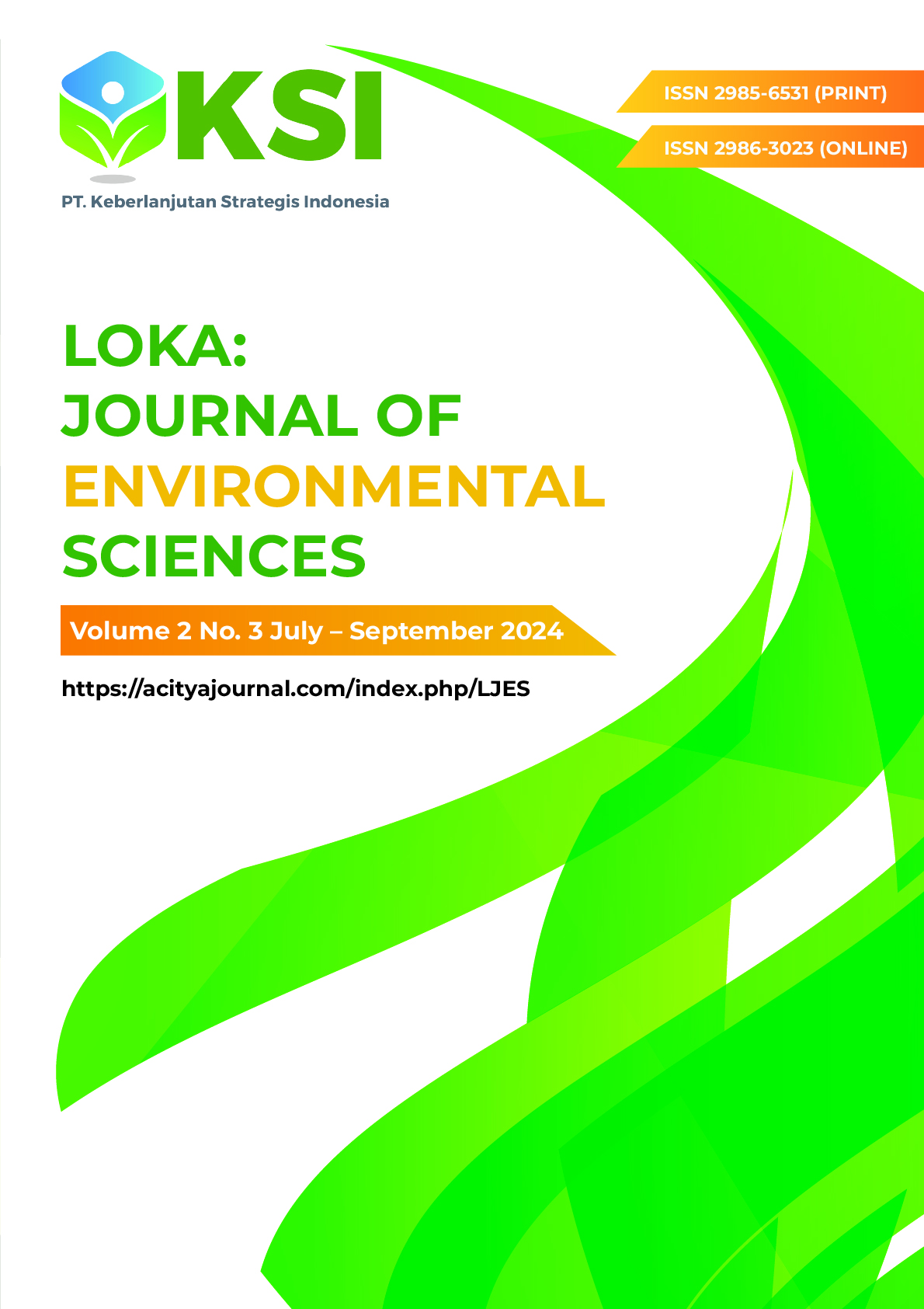The Influence of E-WOM, Perceived Self-Efficacy, and Herding Behavior on Online Purchase Intentions During Shopee Live Streaming of Fashion Products in Denpasar City
DOI:
https://doi.org/10.38142/ljes.v2i3.327Keywords:
E-WOM, Perceived Self-Efficacy, Herding Behavior, Online Purchase IntentionAbstract
Purpose:
Online purchase intention for a product is determined by several indicators. "The purpose of this study was to determine the simultaneous and partial influence of e-WOM, perceived self-efficacy, and herding behavior on online purchase intention during Shopee live streaming of fashion products in Denpasar City.
Methodology:
The population in this study was all Shopee app users in Denpasar City, with an unknown exact number. A purposive sampling method determined the sample size at 100. Data collection was conducted using a questionnaire. The collected data were analyzed using multiple linear regression, while hypotheses were tested using the F-test and t-test.
Findings:
The results of this study indicate that E-WOM, perceived self-efficacy, and herding behavior have a simultaneous positive effect on online purchase intention on Shopee live streaming of fashion products in Denpasar City. E-WOM has a partial positive effect on online purchase intention on Shopee live streaming of fashion products in Denpasar City.
Implication:
Perceived self-efficacy has a partial positive effect on online purchase intentions on Shopee live streaming of fashion products in Denpasar City, and Herding behavior has a partial positive effect on online purchase intentions on Shopee live streaming of fashion products in Denpasar City.
Downloads
References
Andarista, F., Hariyani, D. S., & Fauzi, R. U. A. (2022). Pengaruh Brand Ambassador Dan Promosi Terhadap Minat Beli Brand Erigo Melalui Brand Image Sebagai Variabel Intervening. Journal of Current Research in Business and Economics, 1(2), 36–44.
Duffett, R. G. (2022). Influence of YouTube commercial communication on organic eWOM, purchase intent and purchase associations among young consumers. International Journal of Web-Based Communities, 18(1), 87–107. https://doi.org/10.1504/IJWBC.2022.122394
Halim, R. E., Rahmani, S., Gayatri, G., Furinto, A., & Sutarso, Y. (2022). The Effectiveness of Product Sustainability Claims to Mitigate Negative Electronic Word of Mouth (N-eWOM). Sustainability (Switzerland), 14(5). https://doi.org/10.3390/su14052554
Napawut, W., Siripipatthanakul, S., Phayaphrom, B., Siripipattanakul, S., & Limna, P. (2022). The Mediating Effect of E-WOM on the Relationship Between Digital Marketing Activities and Intention to Buy Via Shopee. Native Speaker (NP) Program, Ammartpanichanukul School, 2(2), 2785–9363.
Nurchayati, N., Widayati, T., Sulistiyani, Nurchayati, & Suprapti, S. (2023). Antecedents of user attitude towards e-commerce and future purchase intention. International Journal of Data and Network Science, 7(1), 505–512.
Nurfitriyani, A. (2022). Persaingan E-Commerce Makin Ketat, Shopee Jadi yang Paling Banyak Digunakan Masyarakat. Wartaekonomi.Co.Id. https://wartaekonomi.co.id/read390872/persaingan-e-commerce-makin-ketat-shopee-jadi-yang-paling-banyak-digunakan-masyarakat
Peña-García, N., Gil-Saura, I., Rodríguez-Orejuela, A., & Siqueira-Junior, J. R. (2020). Purchase intention and purchase behavior online: A cross-cultural approach. Heliyon, 6(6). https://doi.org/10.1016/j.heliyon.2020.e04284
Pradana, A. F. P., Hasan, S., Putra, A. H. P. K., & Kalla, R. (2021). Moderating of SERVQUAL on E-WOM, Product Quality, and Brand Image on E-commerce Purchase Intention. Golden Ratio of Mapping Idea and Literature Format, 2(1), 36–51. https://doi.org/10.52970/grmilf.v2i1.135
Rahman, M., & Gan, S. S. (2018). Generation Y investment decision : an analysis using behavioural factors. Managerial Finance, 1(1).
Rejikumar, G., Asokan-Ajitha, A., Dinesh, S., & Jose, A. (2022). The role of cognitive complexity and risk aversion in online herd behavior. In Electronic Commerce Research (Vol. 22, Issue 2). Springer US. https://doi.org/10.1007/s10660-020-09451-y
Saputra, K. A. K., Laksmi, P. A. S., Suriani, N., & Ekajayanti, L. S. (2024). Accounting Training to Support Transparent and Accountable Village Fund Reporting in Sibetan Village, Karangasem, Bali. Community Services: Sustainability Development, 1(2), 50-55. https://doi.org/10.61857/cssdev.v1i2.76
Saputra, K. A. K., Laksmi, P. A. S., & Dharmawan, I. N. A. S. (2025). Akuntansi Manajemen Lingkungan. Manajemen Lingkungan, 7. https://doi.org/10.61857/cssdev.v2i2.83
Selamet, I. K., Laksmi, P. A. S., Saputra, K. A. K., & Putra, I. K. (2025). Increasing Environmental Awareness of Entrepreneurs and Digital-Based Marketing Mechanisms for MSME Products. Community Services: Sustainability Development, 2(2), 140-145. https://doi.org/10.61857/cssdev.v2i2.83
Suryani, D., Kurniawan, A., & Umiyati, I. (2020). IT Self Efficacy, IT Anxiety dan Minat Menggunakan E-money. Jurnal Riset Akuntansi Dan Keuangan, 8(1), 89–108. https://doi.org/10.17509/jrak.v8i1.20387
Yu, H., Dan, M., Ma, Q., & Jin, J. (2018). Neuroscience Letters. They all do it, will you? Event-related potential evidence of herding behavior in online peer-to-peer lending. Neuroscience Letters, 681(February), 1–5. https://doi.org/10.1016/j.neuroscience.2018.08.034
Downloads
Published
Issue
Section
License
Copyright (c) 2025 I Wayan Deni ARMIKA, Nengah GANAWATI, Ni Ketut SARIANI

This work is licensed under a Creative Commons Attribution-NonCommercial 4.0 International License.
Creative Commons Attribution-NonCommercial 4.0 International License.

















